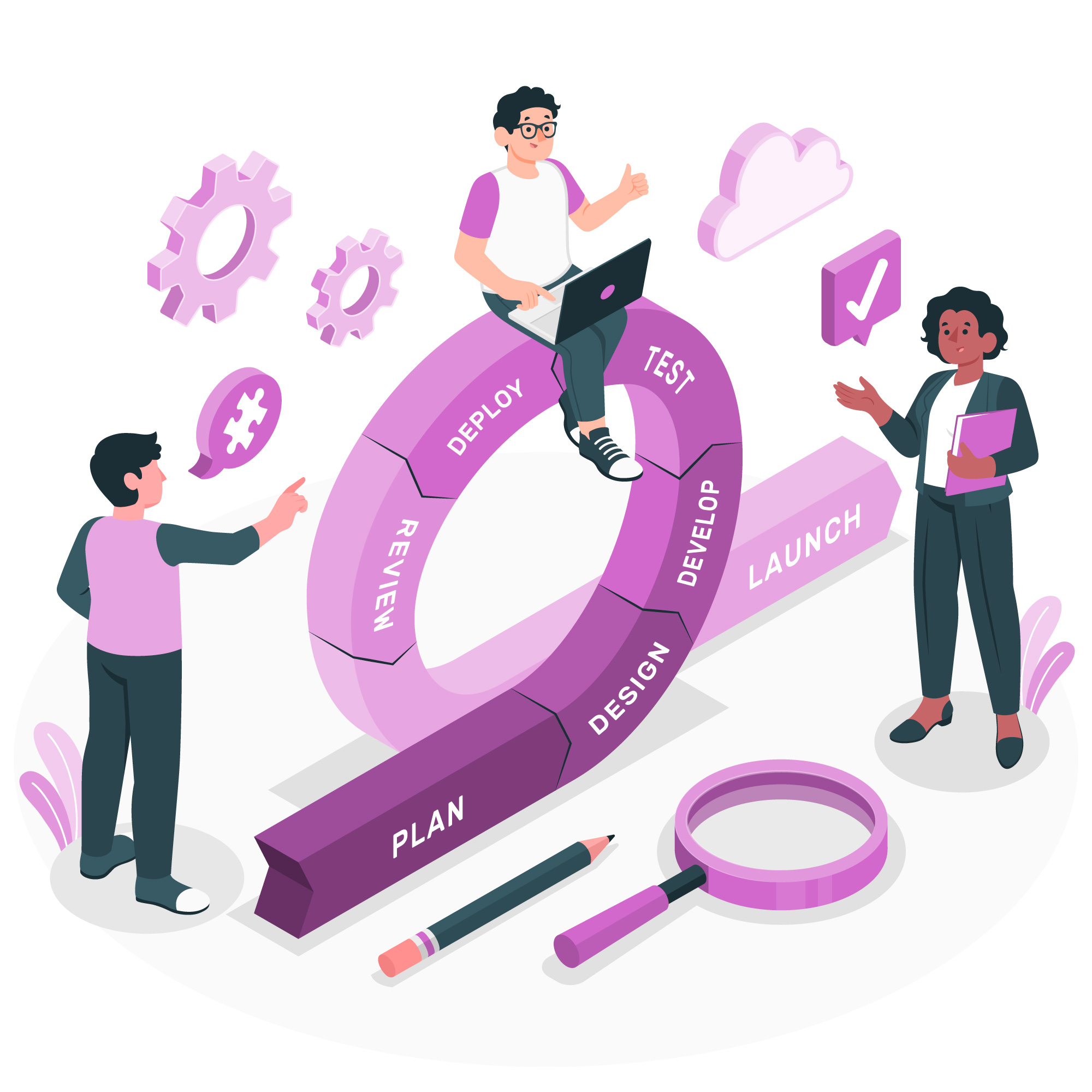
INTRODUCTION
The Software Development Life Cycle (SDLC) stands as a foundational framework, guiding the journey from concept to delivery of a software product. Like a well-charted map, the SDLC provides structure, clarity, and direction to development teams, ensuring that projects progress smoothly and efficiently. In this article, we embark on a voyage through the phases of the SDLC, exploring its significance, methodologies, and best practices.
The Essence of the SDLC
At its core, the SDLC is a systematic approach to software development that organizes the process into distinct phases, each with its own set of objectives, activities, and deliverables. By following the SDLC, teams can manage complexity, mitigate risks, and maintain alignment with project goals and stakeholder expectations.
Phases of the SDLC
Planning Phase:
- Objective: The Planning Phase sets the foundation for the entire project by defining its scope, objectives, and constraints. It involves understanding the needs of stakeholders, identifying project goals, and determining feasibility.
- Activities: Activities in this phase include conducting initial research, gathering requirements from stakeholders, defining project scope, creating a project charter, and establishing a high-level project plan.
- Deliverables: The key deliverables of this phase include a project charter, requirements document, initial project plan, and feasibility analysis.
Analysis Phase:
- Objective: The Analysis Phase involves detailed examination and understanding of the requirements gathered during the Planning Phase. The goal is to define the functional and non-functional requirements of the software.
- Activities: Activities include analyzing gathered requirements, prioritizing features, creating use cases, defining system architecture, and identifying constraints.
- Deliverables: Deliverables may include a system requirements specification document, use cases, data models, and a functional requirements document.
Design Phase:
- Objective: The Design Phase translates the requirements gathered in the previous phases into a detailed blueprint for the software solution. It involves defining the system architecture, designing the user interface, and specifying components and modules.
- Activities: Activities include creating architectural designs, database designs, user interface designs, and detailed component specifications.
- Deliverables: Deliverables of this phase include software design documents, prototypes, mockups, database schema, and interface designs.
Implementation Phase:
- Objective: The Implementation Phase involves the actual coding and development of the software based on the design specifications defined in the previous phases.
- Activities: Activities include writing, testing, and integrating code modules, adhering to coding standards and best practices, and ensuring compatibility and interoperability.
- Deliverables: Deliverables include source code, unit test cases, integrated software components, and documentation.
Testing Phase:
- Objective: The Testing Phase verifies that the software meets the specified requirements and quality standards. It involves identifying and fixing defects to ensure a high-quality product.
- Activities: Activities include planning and executing various types of testing, such as unit testing, integration testing, system testing, and acceptance testing.
- Deliverables: Deliverables include test plans, test cases, defect reports, and a validated software product ready for deployment.
Deployment Phase:
- Objective: The Deployment Phase involves releasing the software to end-users or customers. It includes activities such as installation, configuration, data migration, and user training.
- Activities: Activities include preparing for deployment, conducting pilot tests, training end-users, and ensuring a smooth transition to the new system.
- Deliverables: Deliverables include the deployed software, user manuals, training materials, and support services.
Maintenance Phase:
- Objective: The Maintenance Phase focuses on ensuring the ongoing functionality, usability, and relevance of the software. It involves addressing user feedback, fixing defects, and implementing enhancements.
- Activities: Activities include providing technical support, releasing patches and updates, monitoring performance, and optimizing the software for efficiency.
- Deliverables: Deliverables include patch releases, updated documentation, support services, and continuous improvement of the software.
SDLC Methodologies
Software Development Life Cycle (SDLC) methodologies are frameworks that guide the process of software development from inception to deployment and maintenance. These methodologies define the sequence and activities involved in each phase of the development process. There are several SDLC methodologies, each with its own approach to managing software projects. Here are some of the most common SDLC methodologies:
Waterfall Model:
- The Waterfall Model follows a linear, sequential approach to software development, where each phase must be completed before moving on to the next.
- Phases include requirements analysis, design, implementation, testing, deployment, and maintenance.
- It is suitable for projects with well-defined requirements and where changes are unlikely to occur.
Agile Methodology:
- Agile is an iterative and incremental approach to software development that prioritizes flexibility, collaboration, and customer feedback.
- It involves breaking down the project into small, manageable iterations called sprints, typically lasting 1-4 weeks.
- Agile methodologies include Scrum, Kanban, Extreme Programming (XP), and Lean.
- It is well-suited for projects with evolving requirements, where rapid delivery of working software is essential.
Scrum:
- Scrum is an Agile framework that emphasizes self-organizing teams, short development cycles (sprints), and frequent inspection and adaptation.
- It involves roles such as Product Owner, Scrum Master, and Development Team, and ceremonies like Sprint Planning, Daily Standups, Sprint Review, and Sprint Retrospective.
- Scrum focuses on delivering incremental value to stakeholders through regular releases.
Kanban:
- Kanban is an Agile methodology that visualizes workflow and limits work in progress (WIP).
- It involves using a Kanban board to visualize tasks and their status, with columns representing different stages of the development process.
- Kanban promotes continuous delivery by pulling work only when capacity allows, thus optimizing flow and minimizing bottlenecks.
Lean Software Development:
- Lean Software Development is inspired by Lean manufacturing principles and focuses on maximizing value while minimizing waste.
- It emphasizes delivering value to customers quickly, continuous improvement, and empowering teams to make decisions.
- Lean principles include eliminating waste, amplifying learning, deciding as late as possible, delivering as fast as possible, and empowering the team.
DevOps:
- DevOps is a culture and set of practices that combines software development (Dev) and IT operations (Ops) to improve collaboration and automate processes.
- It emphasizes continuous integration, continuous delivery, automation, and monitoring, aiming to shorten the development lifecycle and increase deployment frequency.
Each SDLC methodology has its advantages and disadvantages, and the choice of methodology depends on factors such as project requirements, team size, organizational culture, and customer needs. It’s essential to select the most suitable methodology for each project to ensure its success.
Conclusion
The Software Development Life Cycle serves as a beacon of guidance for software development teams, providing a structured path from inception to implementation. By understanding and embracing the phases of the SDLC, teams can navigate the complexities of software development with confidence, delivering high-quality products that meet user needs and exceed expectations. Whether following a traditional Waterfall approach or embracing Agile methodologies, the SDLC remains a timeless framework for orchestrating the software development journey.

